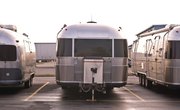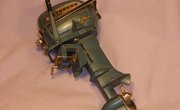Vapor lock is the bane of summer for boaters. Parts of an outboard motor's fuel system are cooled or vented to prevent or break up the bubbles in fuel lines that cause vapor lock. Some boaters have installed clear plastic fuel lines so they can visually detect bubbles in the fuel although it's an unsafe practice; fuel lines should be of a Coast Guard-approved type. The quick fix for vapor lock is to allow your motor to cool. More drastic measures are required to stop vapor lock.
Items you will need
Torx screwdriver
Ensure the vent of the fuel tank is open. As fuel is pulled from an unvented tank, a vacuum forms in the tank that stops the flow of fuel, a situation know as vacuum lock. If the vent on the tank appears to be open and unobstructed, remove the cap from the fuel tank and pump the priming bulb until the bulb is full of fuel to resolve the problem.
Use a lower octane fuel. Vapor lock is the result of the evaporation of aromatics in the fuel line.
Check the water stream fitting on top of your motor to ensure your motor's water pump is operating. Vapor lock occurs in motors that are unable to cool the fuel by other means.
Locate the motor's fuel pressure regulator. Remove the fuel pressure regulator's cover spring and diaphragm using a Torx screwdriver. Inspect the diaphragm for cuts, nicks or abrasions and replace if necessary.
References
- "Mercury Marine Outboard Repair Manual 65-300 HP 1992-2001"; Seloc Marine; 2007
- "Johnson Repair Manual 2.5 to 250 HP Models, 2002-2007"; Seloc Marine; 2007
Writer Bio
Will Charpentier is a writer who specializes in boating and maritime subjects. A retired ship captain, Charpentier holds a doctorate in applied ocean science and engineering. He is also a certified marine technician and the author of a popular text on writing local history.



